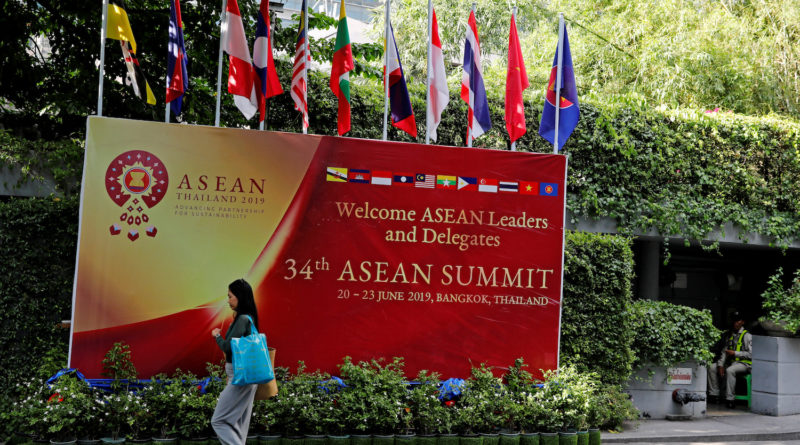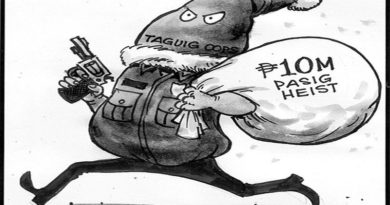Seeing Asean straight as Thailand chairs

When Asean organises big meetings, the tendency for the host is to talk up a brouhaha. So it goes with the 34th Asean summit under Thailand’s rotating chairmanship this year. By year’s end, several hundred Asean-related meetings will have taken place, highlighted by the final annual summitry in October-November that will include top leaders from China, India, Japan, Russia, the United States, among others.
Seeing Asean straight without talking it up or down reveals an entrenched and enduring regional organisation that now faces myriad challenges reminiscent of its past. Taking Asean forward and rebooting the 52-year-old regional vehicle requires a sobering account of its problems and dilemmas. While it has much to answer for, Asean is needed in Southeast Asia more than ever, as global headwinds among the major powers are likely to stiffen.

Thailand as host this year signifies a major Asean shortcoming in recent years. The organisation has too often been taken hostage by the domestic politics of its member states. When it last chaired Asean a decade ago, Thailand was unable to hold top gatherings on time with safety and security, as protesters on one side of the country’s divide took over the meeting venue.
The good news this time is no such disruption is in the offing. But the bad news is that Thailand is unable to come up with an elected government with a clear policy direction or a semblance of regional leadership three months after it held a poll. Fellow Asean members had cut the host country some slack and agreed to a later summit in June just to allow Thailand time to form a government. It is also unclear what kind of governmental stability Thailand will have when the final summit round takes place later this year.
On the one hand, Asean’s menu of priorities and issues to address is long and daunting. In no particular order, here are some of them.

Perhaps it is apt to start with the domestic. Rising authoritarian practices in the region at the expense of popular rule and basic rights and fundamental freedoms from Thailand and the Philippines to Cambodia and Myanmar are consequential for Asean. It makes Asean increasingly a club of authoritarian regimes that gravitate towards China’s model of centralised authority and a successful economy.
Because of Asean’s rising authoritarianism and Thailand’s own military government, civil society organisations may not be allowed voice and representation in an “interface” with Asean leaders this year. A decade ago, despite domestic political tumult, the highlight of Thailand’s chairmanship was a half-hour interaction between civil society representatives and Asean leaders. The Thai government under the Democrat Party at the time insisted on such an interface and carved out time for Myanmar and Cambodian civil society representatives to meet with the chair without antagonising leaders from these two countries.

Civil society is increasing marginalised in Asean summitry. This betrays the Asean rhetoric about being a “people-centred community”. The new Thai government, especially if the foreign ministry is not run by pro-military representatives, should ensure a greater and more salient role for Asean civil society groups.
Hard issues, such as the Rohingya humanitarian crisis in Myanmar’s Rakhine state should also be addressed in this context. In addition, Asean governments’ apparent collaboration that has resulted in mysterious “disappearances” and the deportation of dissidents deserves attention.
Apart from the domestic realm, the second cluster of issues and challenges centres on fluid geopolitics and geoeconomics, underpinned by US-China trade and technological rivalry. Similar to its formative period, Asean risks being divided and overwhelmed by competition among the two pre-eminent superpowers. Back in the 1970s-80s, the standoff was between the US and the Soviet Union. This time, the US and China threaten to pick apart Southeast Asia’s regional organisation.

China is armed with its Belt and Road Initiative for Eurasian dominance, while the US’s countervailing Free and Open Indo-Pacific strategy is set out to hem in China’s assertive rise. Asean needs BRI projects but these should be implemented in smart hedging ways that do not make Asean governments beholden to China. Asean can also reconceptualise the FOIP to make it compatible with regional peace and stability. The point for Asean will be to keep the superpower slugfest manageable at arm’s length without having to choose one side or the other.
The South China Sea will be critical to Asean’s effectiveness in the near term. Now that China is being pressed by the US, Beijing appears more pragmatic and accommodating to regional concerns. It is an opportune time for Asean and China to conclude the Code of Conduct for the South China Sea. As it is an ideal broker for the CoC because it is not a claimant, Thailand should risk whatever remains of its political capital to finalise the agreement. In addition, Thailand should also entice China to be more flexible in its dominant role in the Mekong Region by harmonising Beijing’s Lancang-Mekong Cooperation with existing mechanisms, such as the Mekong River Commission within the Greater Mekong Subregion.

Asean is not monolithic and self-contained. The recent part has shown certain Asean members doing the bidding for China, whereas others have been favourable towards the US. This division can only be bridged by stronger leadership from the Asean chair and the Asean secretary-general. If divisions widen, Asean will become more perfunctory, rhetorical and bureaucratic without effective functionality and regional autonomy from the major powers.
It is time to revamp the Asean secretary-general’s position. The Asean secretary-general should no longer be alphabetically rotated among member states, reserved more or less for uncharismatic foreign policy bureaucrats close to retirement age. Surin Pitsuwan set a high bar as an effective global spokesman for Asean. But there are outspoken and plain-speaking diplomats in Surin’s mould around the region who could elevate Asean’s status on the global stage.

The third cluster of challenges comprises non-traditional security concerns, such as transnational crime, human and drug trafficking, even the haze that Thailand has faced recently. These are lower hanging fruits that Asean can do much more about for collective benefit. Much is riding on the Regional Comprehensive Economic Partnership as a consolidation of Asean’s free-trade agreement with major regional economies, namely Australia, China, India, Japan, New Zealand and South Korea. RCEP is a solid building block towards deeper and wider trade liberalisation, such as the Comprehensive and Progressive Agreement for the Trans-Pacific Partnership. Beyond its chairmanship, Thailand should aim to join the CPTPP at the earliest opportunity. Going forward, the Asean chair should promote intra-Asean investment as the locomotive of growth and regional integration. Intra-regional trade has plateaued by more integration of supply chains and production networks can take place on the investment side.
Asean is full of constraints and challenges at home within each member state and across the region in geopolitical and geoeconomic terms. Yet with the deteriorating situation of superpower competition, Asean has nowhere to turn but towards its own region. Doing so effectively requires facing issues and challenges head on with minimal self-congratulatory inclinations.

Thitinan Pongsudhirak, PhD, teaches at the Faculty of Political Science and directs the Institute of Security and International Studies at Chulalongkorn University.
THITINAN PONGSUDHIRAK
AN ASSOCIATE PROFESSOR AT CHULALONGKORN UNIVERSITY
An associate professor and director of the Institute of Security and International Studies, Faculty of Political Science, Chulalongkorn University and the Sir Howard Kippenberger Chair at the Centre for Strategic Studies, Victoria University of Wellington in New Zealand.

ADS by Cloud 9:
.
– SPACE RESERVE FOR YOUR ADVERTISEMENT –
.

–THIS SPACE BELOW IS RESERVE FOR YOUR ADVERTISEMENT –











